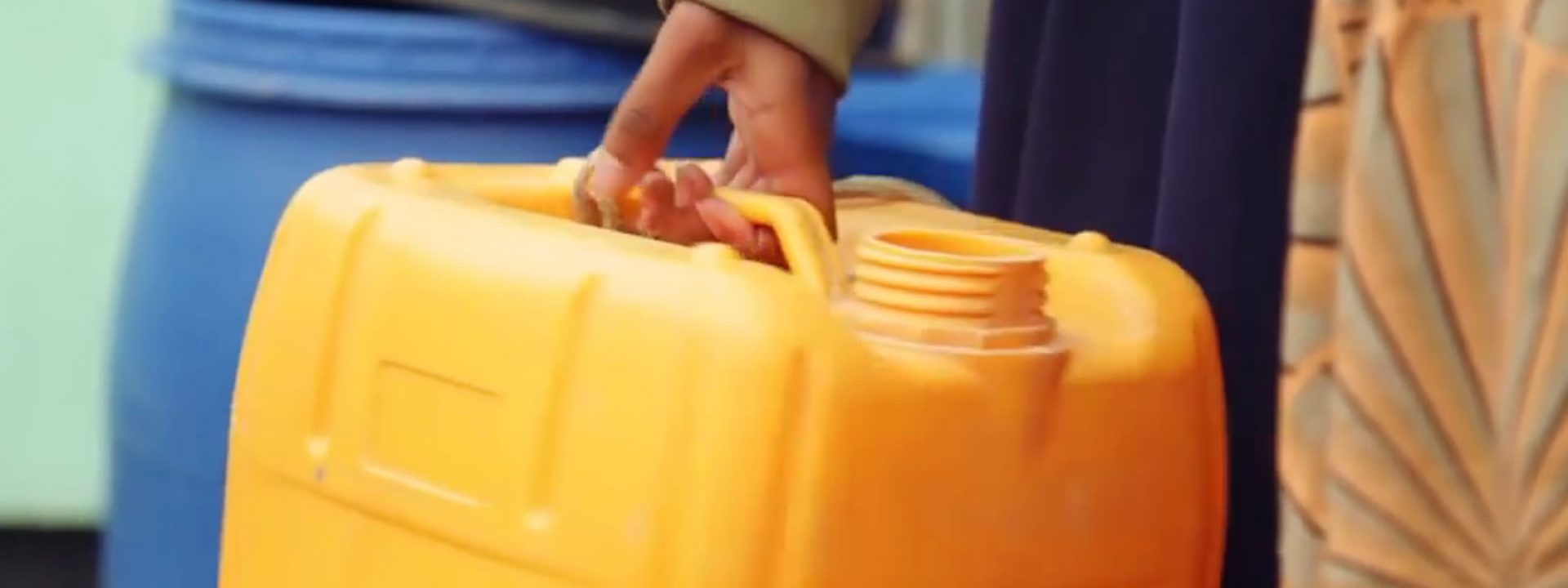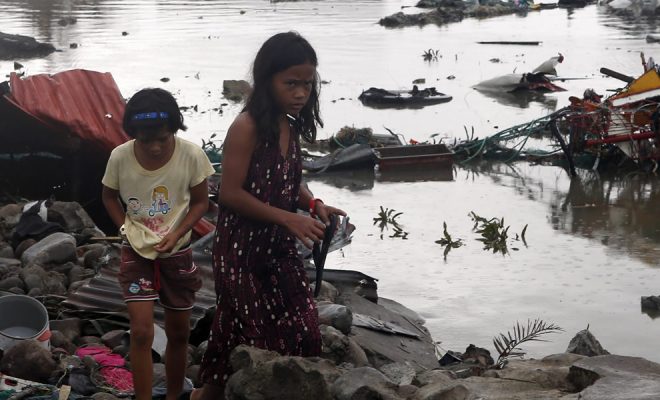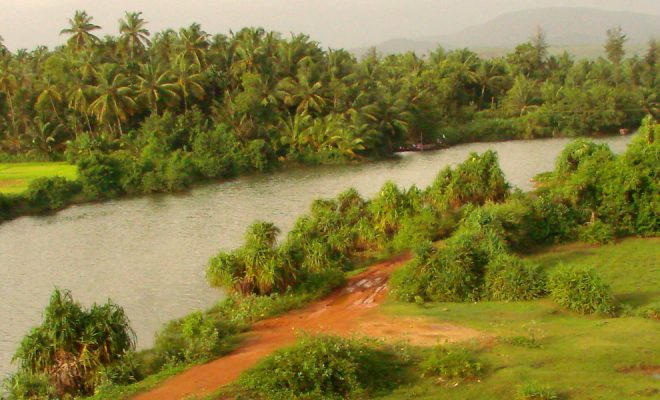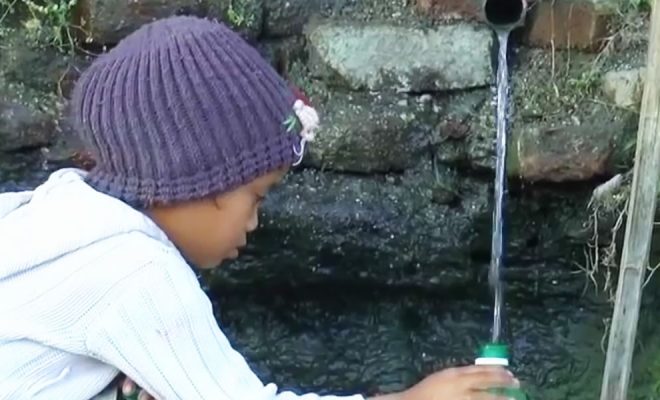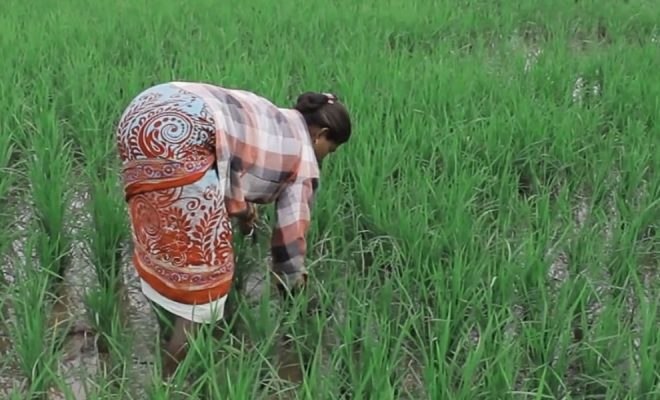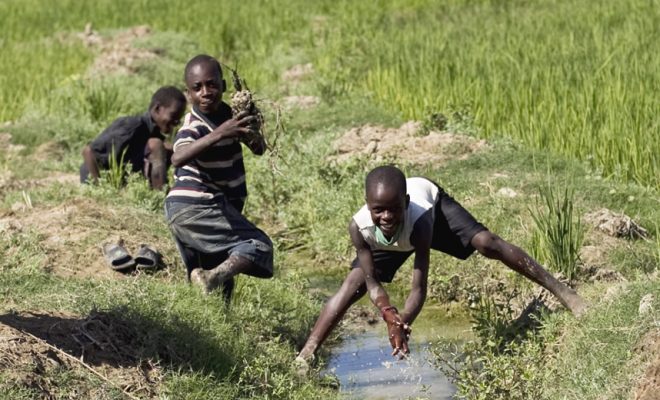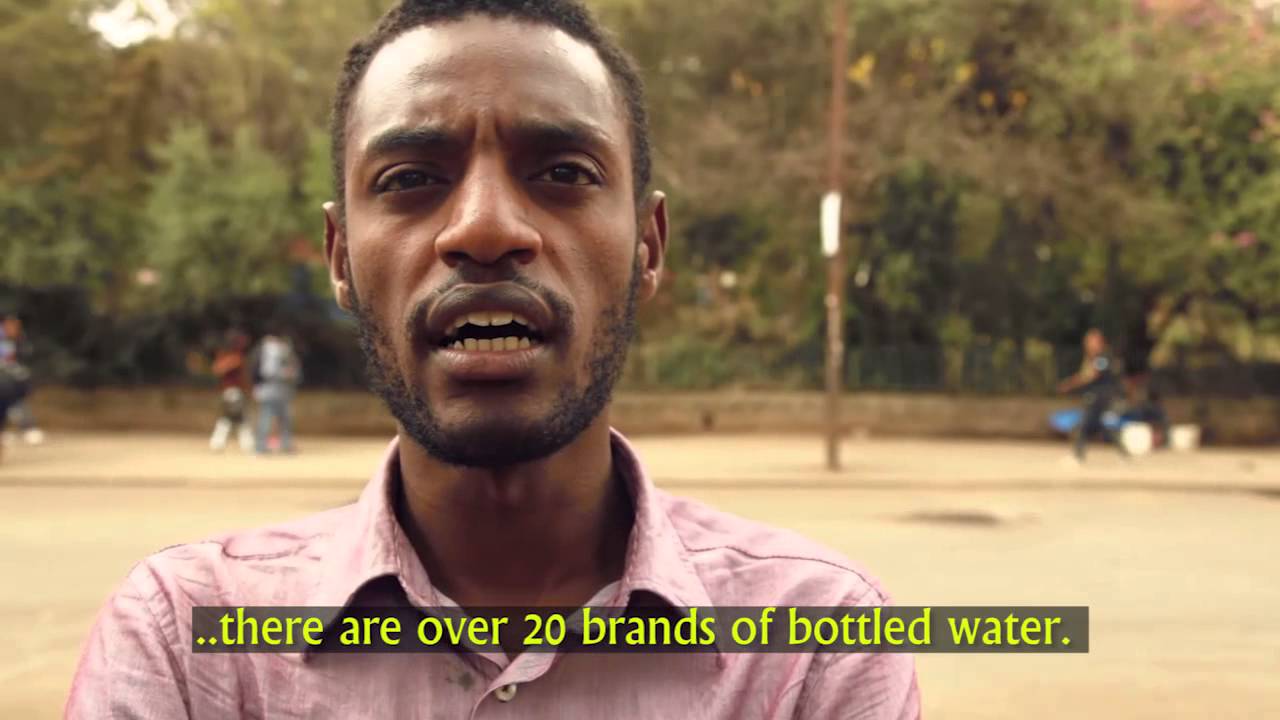
Imbalance by Sev (Ethiopia), finalist of the We Art Water Film Festival 3. Micro-documentary category.
During the decade of the 1880s, the Ethiopian empress Taitu Betul and the nobles of the court used to take thermal baths in a spa located near the sacred mountain of Entoto, where her husband, the emperor Menelik II, had built the palace which was the seat of his government.
In 1887, at the request of the empress, the emperor founded a city around this spa, located at a height of 2,350 meters, which his wife named Addis Ababa, “New Flower” in Amharic, the common Ethiopian language.
Addis Ababa currently has three million inhabitants, which could become over five million in 2037, according to the World Bank. The old spa has disappeared and paradoxically, the main problem in the city is the lack of access to drinking water.
Lack of infrastructure and high pollution
The Ethiopian capital, which is also the headquarters of the African Union and of the United Nations Economic Commission for Africa, is the highest city in Africa, with an average annual rainfall of 1,150 mm, almost double than Barcelona (612 mm) and practically the same as the Scottish city of Glasgow (1,124 mm).
This relatively high rainfall is due to the intensity of the rains from July to September. But the downpours cause an abundant runoff in which little water can be saved due to the lack of storage infrastructures. During the rainy season, the flooding that occurs in many neighborhoods of the city bring to light the mismanagement of waste and the poor condition of sanitation, as it spreads the diseases related to poor water.
On the other hand, 60% of the food that is consumed in the capital is irrigated with untreated waste water, and therefore food poisoning is common. According to the World Bank, the epidemics caused by pathogenic agents in the water of Addis Ababa imply a medical treatment cost of around 700.000 dollars per year, without taking into account the job losses.
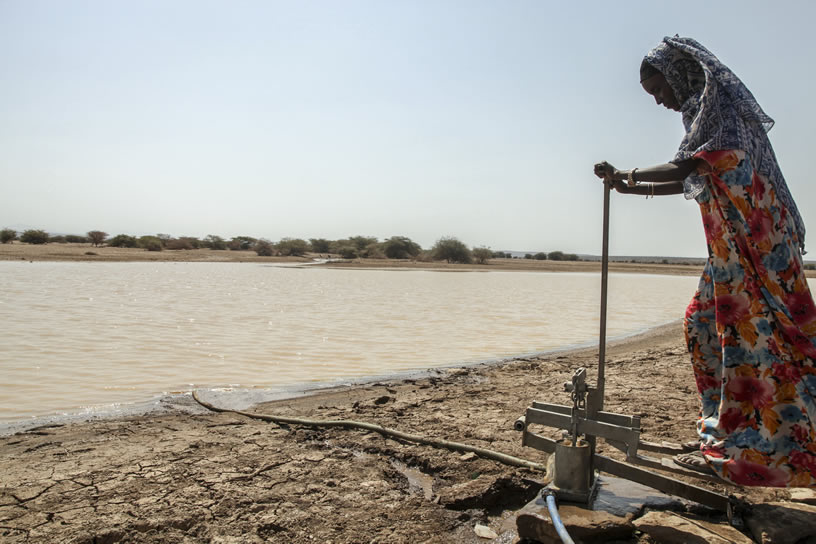
©FAO/Tamiru Legesse
10 February 2016. Addis Ababa. Ethiopia – Mayram Hola pumping water from the pond to water animal fodder seedlings. This water pond (water harvesting structure) was constructed with the support of FAO in Elidaar District of Afar Region, in North Eastern Ethiopia.
Lines for water
The everyday rule in most households in Addis Ababa is to fill several containers with water when there is a supply service, which is something that only happens every 15 or 30 days in the poorest neighborhoods. In some areas, as shown in the short film, the supply comes during the day; in others this happens at night, therefore the lines of citizens with water canisters is now part of the night landscape of the city.
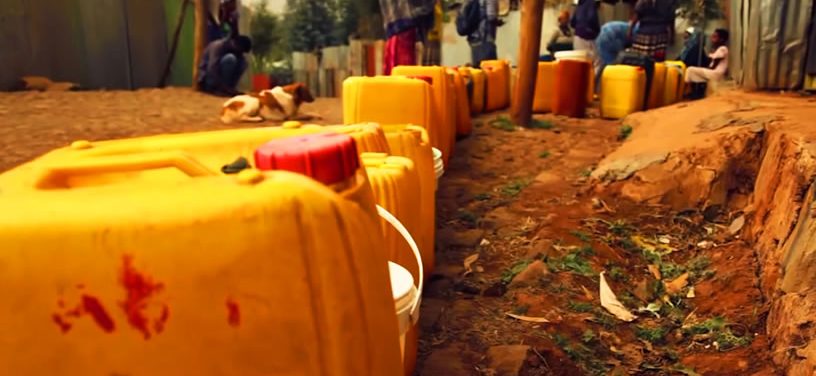
In those days without service, the citizens of the undersupplied neighborhoods need to search for water in the springs found in the outskirts of the city, those who are more fortunate travel on a donkey, the rest needs to walk. As usual, women bear the brunt.
The problems of the capital can be extended to the rest of the country which has an average rainfall of 848 mm per year. The mountainous topography of Ethiopia and its lack of infrastructures provide a very low water storage capacity, around 30%, compared to other countries like Australia, with a high water stress (an average rainfall of 534 mm per year), which reaches 80%.
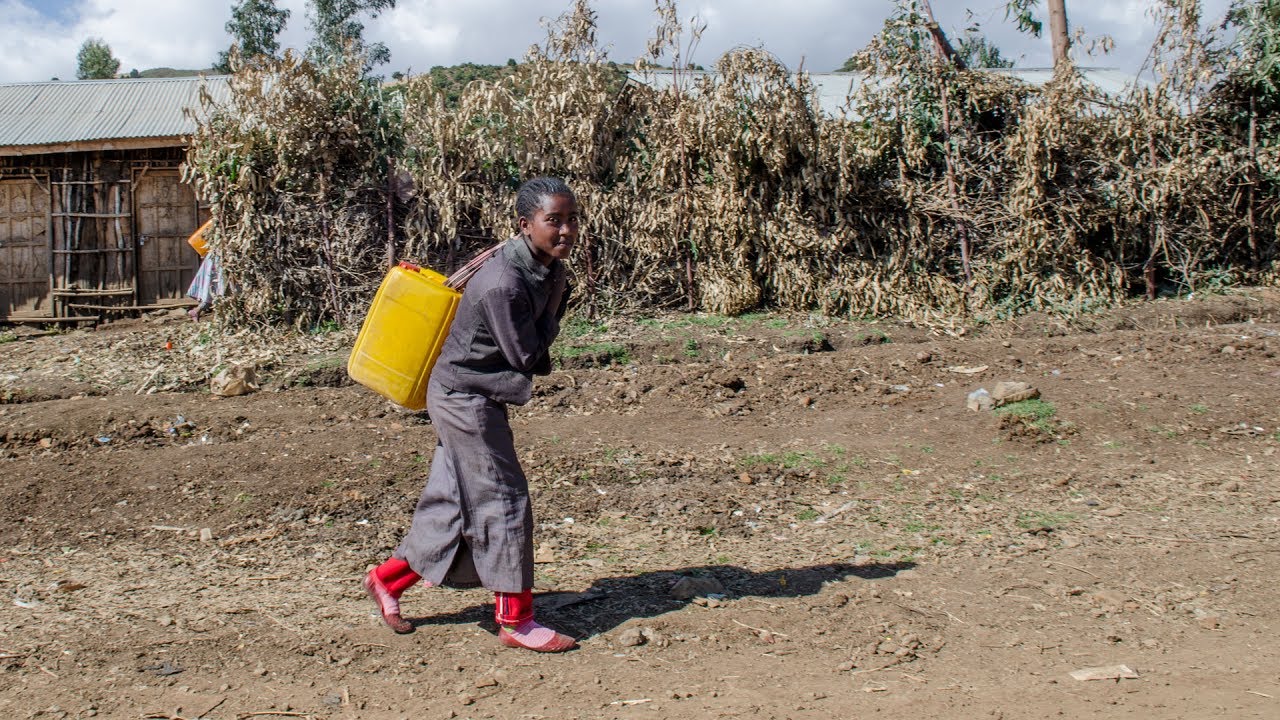
As can be deduced from the proliferation of bottling companies shown in the short film, Ethiopia is a relatively water-rich country. Its underground water reserves and the flow of its rivers (80% of the flow of the Nile comes from its Ethiopian section) are enough to supply drinking water to its 92 million inhabitants. It is the lack of material and human resources to build infrastructures that produces the lack of drinking water in most of the country. The project developed by the We Are Water Foundation in collaboration with Intermón Oxfam in the Oromiya and Southern Nations, Nationalities and People´s regions is an example of the actions that are required.
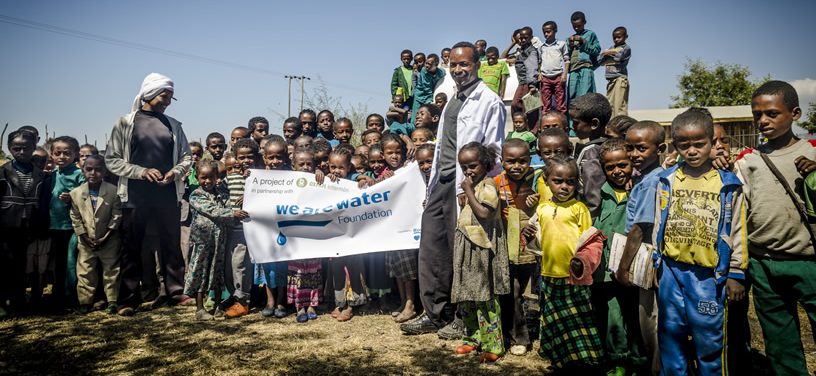
© Carlos Garriga/ FWAW
No more famine
Ethiopia has faced famine throughout its history. The most terrible one was in 1984, a year in which it did not rain for months in the north of the country, causing the death of around one million people and whose dramatic images reached Western households through television.
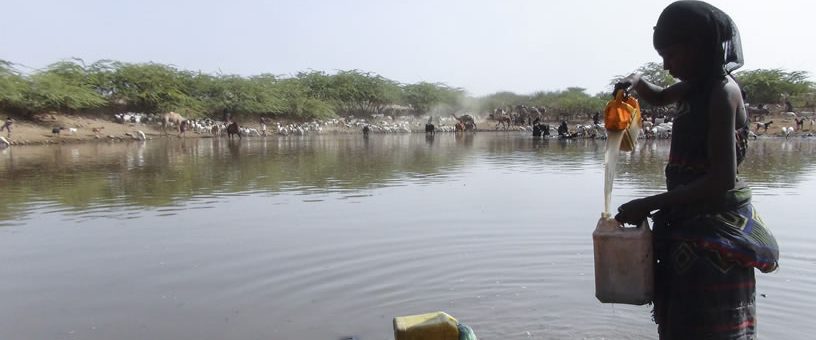
©FAO/Tamiru Legesse
8 February 2016. Addis Ababa. Ethiopia – This water pond (water harvesting structure) was constructed with the support of FAO in Gewane District of Afar Region, to collect water from rain. It has been serving the local people including to drink thousands of their animals when the drought season is at its pick.
In summer last year there was a new alert due to the lack of rainfall caused by the El Niño phenomenon, according to climatologists. Ethiopians are now in the process of reliving that same drama, as 42 million people do not have access to a safe water source and 8,500 children under the age of 5 die every year due to diarrheal diseases caused by contaminated water. The United Nations and the NGOs alert to their vulnerability: no more famine in Ethiopia.


